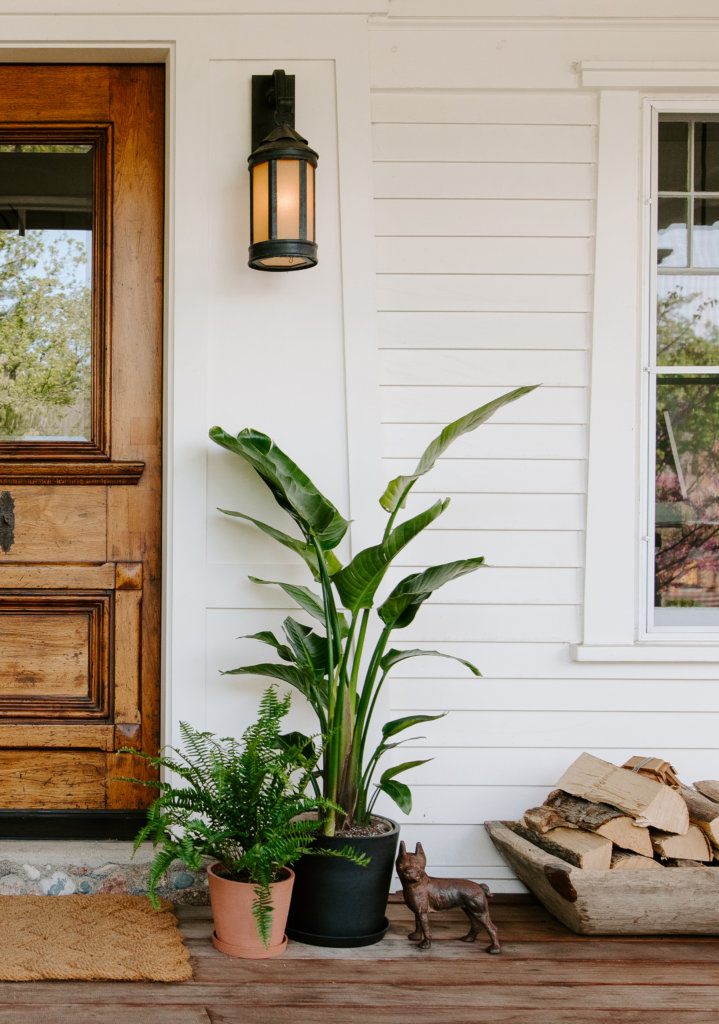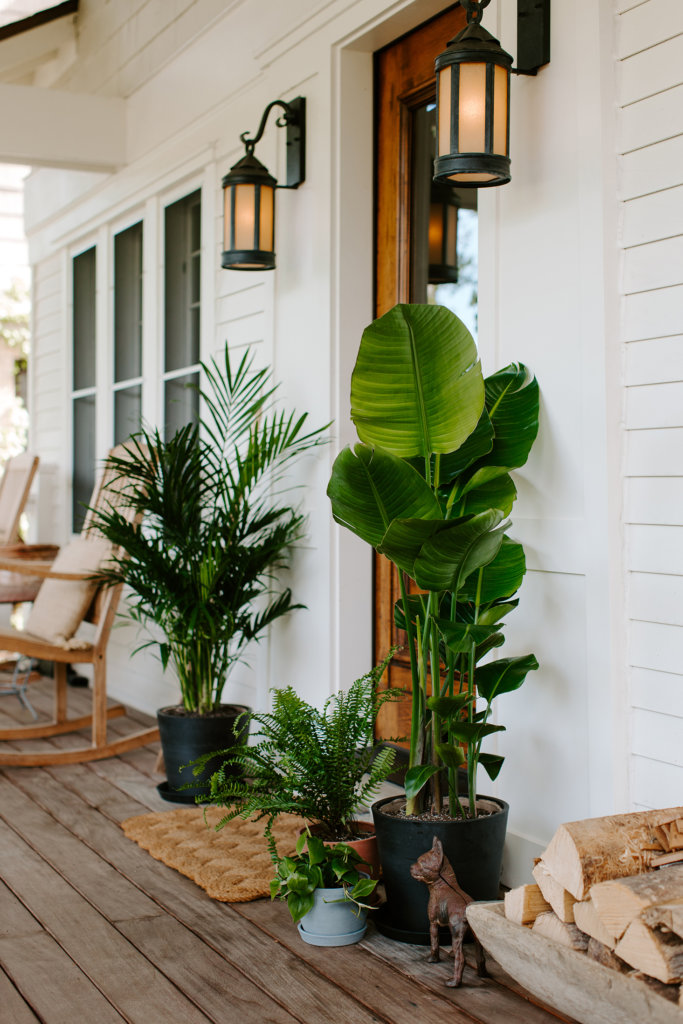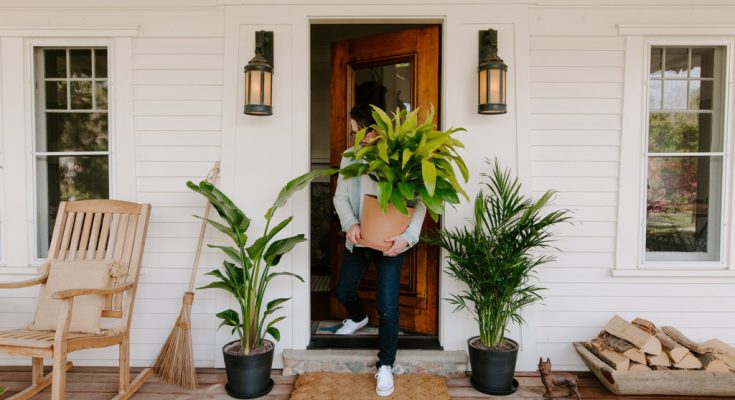You aren’t the only one who loves the balmy temps and sunny days of summer weather—your plants do, too! The Grow-How® Team answers all your questions about moving your indoor plants outside during the summer months.
Can all plants go outside?
Yes, all of our indoor foliage plants can go outside during the warm summer months. That’s where plants evolved, after all! They will absolutely adore the fresh outdoor air. One of the main things to keep in mind is the intensity of the outdoor sunlight when placing your plants outdoors.
In their native environment, many common houseplants grow along the forest floor in bright, indirect light that’s filtered by the canopy of taller trees above. For plants that prefer indirect light indoors, you’ll want to mimic this when placing your plant outdoors by avoiding areas that receive direct sun. It’s also important to acclimate your plant to an outdoor environment.
How do I acclimate a plant to the outdoors?
Acclimation is the process of gradually introducing your plant to a new environment, such as a change in light intensity or temperature. Proper acclimation allows your plant to incrementally adjust to its new home, avoiding undue stress that can halt growth or damage the plant.
To acclimate your plant, start by placing it in a shady area outside for an hour or two the first day, slowly increasing the time it spends outdoors over the next 7-10 days. It’s OK for most plants to receive direct sun in the morning, when it’s much less intense. If your plant will receive morning sun, begin placing it in the sun for short periods during the morning about five days after you have started the acclimation process. For plants that prefer indirect light, it’s best if they are shaded from the sun by 10 a.m. or so.
Even plants that can handle direct sunlight, such as a Bird of Paradise, Sansevieria, Ponytail Palm, and most cacti, need a gradual introduction over a period of at least 10 days. This will allow them to acclimate to the intensity of the full outdoor sunshine without experiencing scorched leaves.
When do I know it’s safe to bring my plant outside?
It’s safe to move your plants outside when the outdoor temperatures stay consistently above 50°F. Pay attention to the weather report. If nighttime temperatures are set to fall below 50°F, bring your plants in for the night. Bring them back outside when temperatures rise.
If you forget and they’re exposed to lower temperatures for a short period, they’ll probably be fine in the long run! Temperatures below 50°F may stunt their growth for a few weeks, and temperatures below 35° may cause some leaf damage. Freezing temperatures will kill the leaves of most houseplants completely, but the roots typically survive if it was only a short exposure.

Will I need to water my plant more once it’s outside?
How often you need to water will become much more variable when your plant is outdoors, since there are so many factors at play:
– Temperature, light exposure, and wind: Higher temperatures, light levels, and wind speeds will cause your plant to utilize water faster, meaning you’ll need to water more often. Lower temperatures, light, and wind will slow down the plant’s use of water.
– Humidity: Plants in low humidity will need watered more frequently, and plants in high humidity will need watered less frequently.
– Rainfall: If your plant can receive rainfall, this can mean less watering for you. Generally a rainfall of 1″ or more can replace a thorough soaking. Always check your plant’s soil to be sure it got enough rain, and remove the plant saucer on outdoor plants that receive rain so that excess water can freely drain away.
As you and your plant adjust to a new routine outside, it’s important to keep a close eye on the soil moisture of each plant. We recommend checking the soil daily until you learn how your plants react to their new home and any changes in weather.
Do I need to mist my plant when it’s outside?
The need for misting outdoors depends on which region of the US you reside in. In the Southeast, Midwest, Northeast, and along the West Coast, summer humidity levels should be sufficient for tropical plants. However, if you find yourself in the Southwest or a desert climate, misting your plants often is a good idea. You can also use a pebble tray to boost humidity.
Is it possible for my plant to get a sunburn?
Yes! Even sun-loving plants can burn if not acclimated properly before moved from indoors to the intense sunlight outdoors. Bleached foliage can indicate sunburn, as well as brown striping on the leaves where they were exposed to direct sun rays. Sunburn isn’t usually lethal. You can clip off the affected leaves and wait for new leaves to form. Move your plant to a shadier area and it will bounce back.

What if it rains? Can my plant stay outside?
Absolutely! Especially during a gentle and steady rainfall. Be mindful of the wind—always secure and protect your plants if the gentle rain turns into an all-out thunderstorm. Severe wind and rain can damage the foliage of your plants if they are not sheltered from the elements by shredding leaves, breaking stems, and even tipping pots onto their sides. If you move your plants to a more protected area during a storm, keep in mind where they are sitting once the rain stops and the sun appears again. Take care to protect the foliage from the bright sun rays.
Any other tips?
- Once outside, check your plants’ leaves on a regular basis for any pests.
- Fertilize regularly, especially if there has been quite a bit of rain. Too much rain can leach nutrients out of the soil. Plant food will quickly replenish any lost nutrients. Follow the instructions and always make sure the soil is damp before applying fertilizer.
- When placing your plants outside, remove them from the saucer so the water can flow freely from the bottom of the pot during any rain showers.



